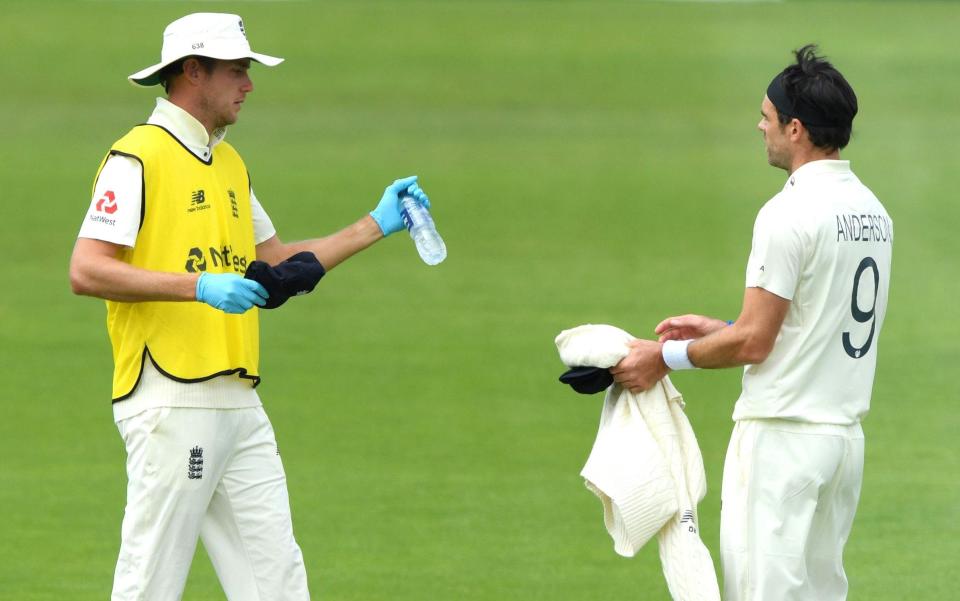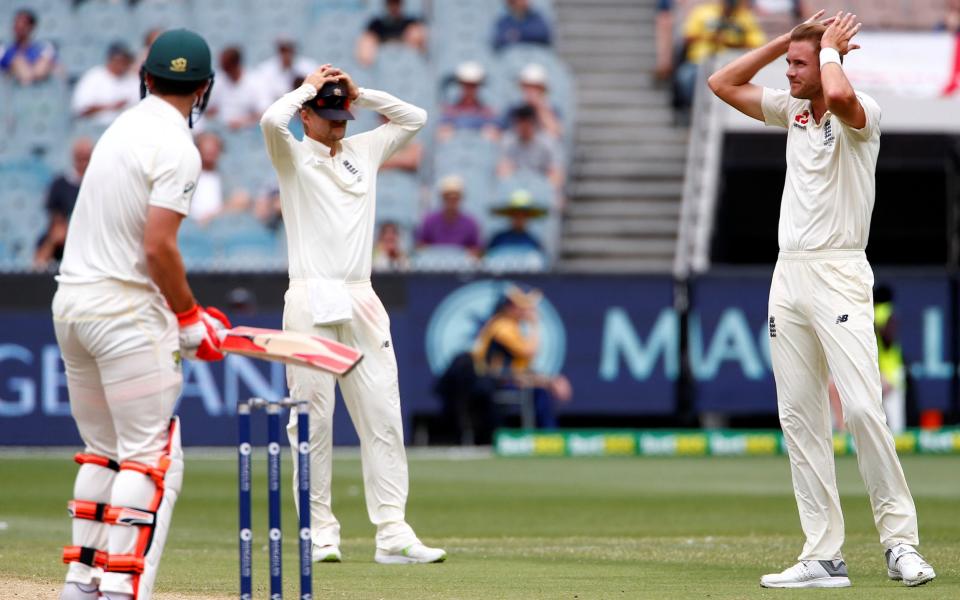Beat West Indies or win the next Ashes? That is England's dilemma and Stuart Broad has paid the price

Surveying the debris of a thrashing in Australia in January 2018, the simplest conclusion was also the most pertinent. If they were to be competitive in Australia, England could never again field an attack comprising four right-arm seamers who all bowled around 80mph.
“The pitches have not really suited our bowling,” lamented James Anderson. “They've been slow and we've come up against a batting line-up that is patient and mentally tough. We don't have an X-factor bowler like Pat Cummins or Mitchell Starc. We don't have that sort of pace.”
Thirty months on, thanks to the discovery of Jofra Archer and the rehabilitation of Mark Wood, England do. The question - the answer to which has so angered Stuart Broad - is how to use it.
At home, England have long had a formidable Test attack. A combination of the Dukes ball, seam movement and the unrelenting excellence of Anderson and Broad - with Chris Woakes almost as effective in home climes - have given England the means to succeed at home.
The snag is that this template has simultaneously been a road to nowhere overseas. Across their 10 Tests in India and Australia in 2016 and 2017/18 - which England lost a cumulative 8-0 - each wicket taken by an England bowler cost 50.50 runs. In the 10 first innings they bowled in these campaigns, England never conceded fewer than 327; only twice did they concede under 400. For all their individual qualities, when Anderson, Broad and Woakes were fielded together overseas they were monochrome on a stage demanding technicolor.
It was the latest distillation of a simple truth. What works in England does not easily translate to overseas shores, especially Australia.
Across all Test cricket in Australia since 2010, a basic rule holds: the faster the bowling, the more threatening it is. Seamers bowling at 80 to 85mph, like England’s quartet in 2017/18, average 34. Those who deliver the ball at 85 to 90mph average 31 - and bowlers at over 90mph average just 27.

But in England, this rule - the faster you are, the more threatening you are - does not hold. Seamers who bowl between 80 and 90mph average 28; those who bowl over 90mph actually average 31. The Skodas outperform the Lamborghinis.
Test cricket is in an age of increasingly pronounced home advantage; even India, the best-balanced side in the world, were comfortably defeated in New Zealand earlier this year. All teams are struggling to build an adaptable side to thrive on the road. The contrast between conditions in England and those in most other countries renders the tension between building the best possible team at home and a side that can compete best away from home particularly acute.
Looking at the narrow task of picking the strongest XI to win the first Test against the West Indies, the omission of Broad was hard to justify. This is not just about his sterling 13-year body of work in an England Test shirt. Simply consider his 23-wicket haul in the last Ashes, when he led the attack with zest, and his control and threat in South Africa, when he took 14 wickets at 19.4 in England’s 3-1 win.
Had this been a home Ashes Test, it is hard to imagine Broad being omitted. But English cricket’s preoccupation with the Ashes - when he was unveiled as head coach, Chris Silverwood declared, “Job number one is helping Joe [Root]… to keep moving forward so that in two years’ time we can go to Australia and make a real impact,” - brings a broader focus to their team selection. So does the target for England to reach world No 1 again.
The controversy over Broad’s non-selection was a window into England’s wider bind. The England Test team are really balancing twin aims: to win now and to be in the best possible position to win when Brisbane 2021 rolls around. What is best for the first of these aims will not always be what is best for the second. To build a stronger team away, England risk jeopardising what has made them so strong at home.

At home, Broad and Anderson may well still be England’s best attack. But, for all their incredible service to English cricket, England do not intend to go to Australia next year with Anderson and Broad - who will by then be 39 and 35 - as their new-ball bowlers once again or, really, with any more than one in their XI. The view at the top of English cricket is unambiguous that the team’s chances of improving on the last two Ashes tours - or of competing in India this winter - hinge on building a varied attack.
Not selecting both Broad and Anderson together now might bring accusations of hubris, even of not fully respecting their opponents. But continuing to select both would bring counter-charges. Of expediently relying on the wiles of Broad and Anderson rather than assembling an attack with the variety, and age profile, to win in Australia and India. Of English Test cricket being content to, mostly, thrive at home, but in a way that will not lead England back to number one in the world.
Before this Test, England had two choices. But, perhaps, like going to Scylla or Charybdis, both were wrong.

